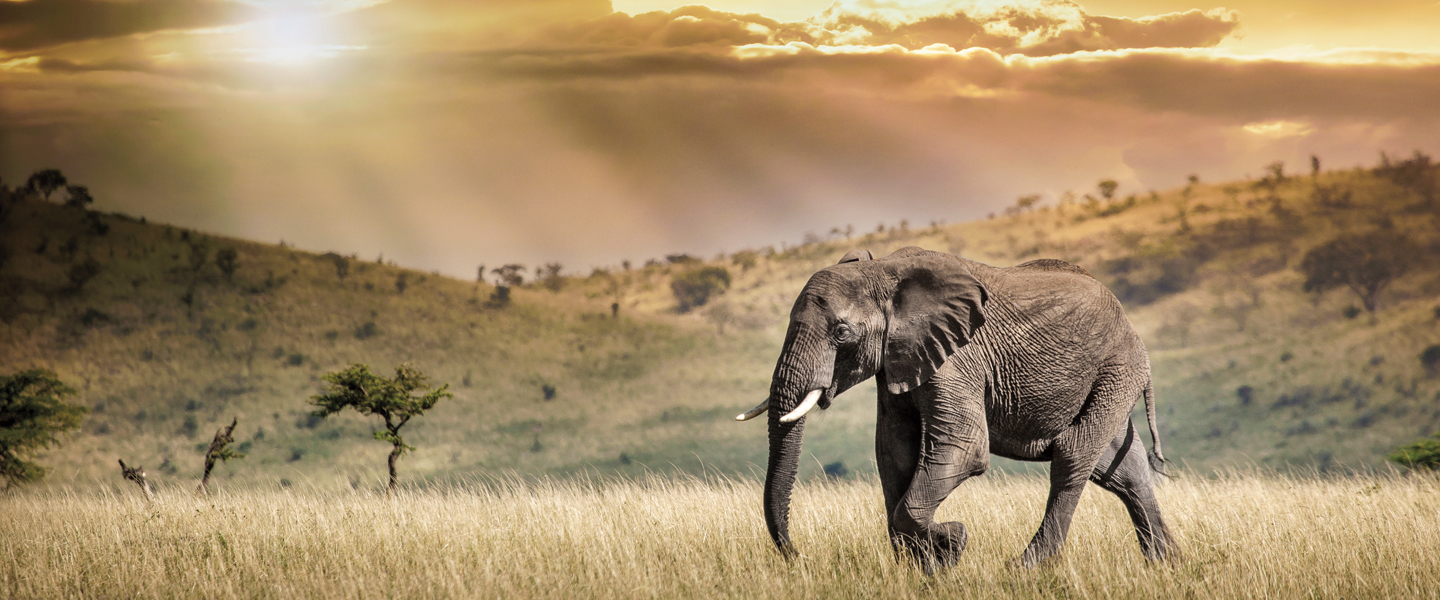Last fall, rangers in Zimbabwe’s Hwange National Park made a gruesome discovery: the carcasses of more than 20 elephants, all killed by poachers. The animals had been poisoned and their ivory tusks hacked off to be sold.
The scene is grimly familiar in sub-Saharan Africa. Even in protected wilderness areas, rangers are no match for determined poachers, who kill an estimated 35,000 elephants annually for their valuable tusks. The illegal ivory is then smuggled to other countries where demand for the material is high. There, it’s carved into statues, jewelry, and other keepsakes that can sell for thousands of dollars each. This illegal trade has more than doubled since 2007, and it has pushed Africa’s elephants toward extinction.
But now the animals are getting some powerful assistance. Last September, China and the United States—the world’s top two ivory markets—pledged to work together to end the illicit trade. In a joint announcement, Chinese President Xi Jinping and U.S. President Barack Obama agreed to enact “nearly complete bans” on the import and export of all ivory and take steps to halt the domestic trade in both countries. The move signaled fresh hope for elephants and allowed for a welcome moment of cooperation between China and the U.S. (see sidebar “A Tense Relationship,” far right). Once in place, the new rules could be a major step toward ending the poaching crisis that threatens to wipe out elephants.
“We currently face the risk of losing wild elephants during my lifetime,” Obama said recently. “It’d be an unpardonable loss for humanity and the natural world. There’s no question: We need to take urgent action to save one of the planet’s most majestic species.”
Last fall, rangers in Zimbabwe’s Hwange National Park made a gruesome discovery. They found the bodies of more than 20 elephants, all killed by poachers. The animals had been poisoned and their ivory tusks hacked off to be sold.
The scene is grimly familiar in sub-Saharan Africa. Even in protected wilderness areas, rangers are no match for determined poachers, who kill about 35,000 elephants a year for their valuable tusks. The illegal ivory is then smuggled to other countries where demand for the material is high. There, it is carved into statues, jewelry, and other keepsakes that can sell for thousands of dollars each. This illegal trade has more than doubled since 2007, and it has pushed Africa’s elephants toward extinction.
But now the animals are getting some powerful help. Last September, China and the United States promised to work together to end the illegal trade. They are the world’s top two ivory markets. In a joint announcement, Chinese President Xi Jinping and U.S. President Barack Obama agreed to enact “nearly complete bans” on the import and export of all ivory. They also agreed to take steps to stop the domestic trade in both countries. The move signaled fresh hope for elephants and allowed for a welcome moment of cooperation between China and the U.S. (See “A Tense Relationship,” p. 17.) Once in place, the new rules could be a major step toward ending the poaching crisis that threatens to wipe out elephants.
“We currently face the risk of losing wild elephants during my lifetime,” Obama said recently. “It’d be an unpardonable loss for humanity and the natural world. There’s no question: We need to take urgent action to save one of the planet’s most majestic species.”

